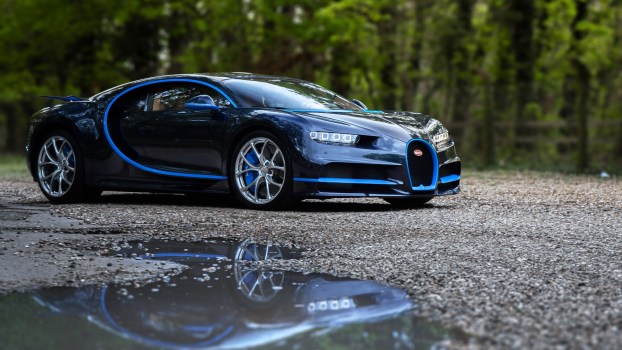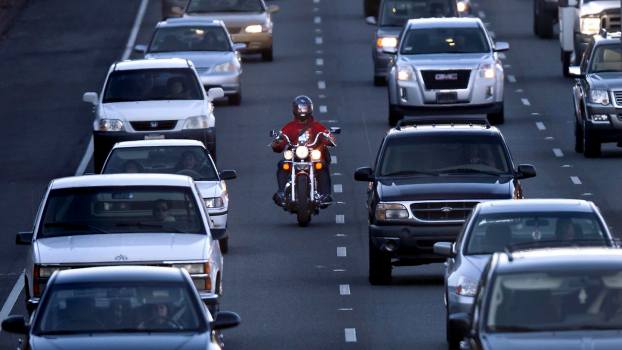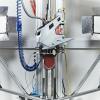
You Need to Know These Moped Laws Before Buying
Mopeds, like motorcycles, are known for low maintenance costs, fuel efficiency, and making it easy to get around. Before making your purchase, though, make sure you know your state’s laws. These are the moped laws you need to know before buying.
What’s the difference between mopeds, scooters, and motorcycles?
Insurance outfits, like State Farm, classify mopeds differently from scooters and motorcycles and are the smallest of the three. Mopeds have a step-through frame (with or without pedals) and a motor that is 50cc or smaller. These can go up to 40 mph and have great gas mileage (up to triple digits).
Scooters also have a step-through frame but have a bigger motor (50cc to 250cc). Scooters with the biggest motors could go 75 mph but still may not be allowed on the highway. Motorcycles have an engine in the front between the driver’s knees and are usually allowed on all roads.
Do you have to have a license to drive a moped?
Every state requires motorcycle licenses (although sometimes that’s an authorization on a car license), but a moped license isn’t required in every state. U.S. moped laws are different in each state, but if your engine is 50cc or less, you’ll generally only need a learner’s permit or driver’s license. Scooter licensing requirements may be different from moped ones depending on the state.
According to Vespa, you’re able to drive 50cc models with a regular driver’s license in Alaska, Arkansas, Colorado, Connecticut, Indiana, Iowa, Massachusetts, New Hampshire, New Mexico, New York, North Carolina, Oregon, Rhode Island, South Dakota, Virginia, and Wisconsin.
Some states have a different minimum age to drive a moped than to drive a car. For mopeds up to 50cc, it’s age 10 in Arkansas and age 13 in New Mexico. All other states are between ages 14 and 16. For scooters and motorcycles over 50cc, the minimum age is 14 in Alabama, Alaska, and Kansas; 15 in Florida, Hawaii, Louisiana, and Mississippi; and 16, 17, or 18 in the remaining states. Some states require a motorcycle rider education program for riders under a given age.
Title and registration
Although motorcycles need a title (your proof of ownership) and registration in every state, mopeds only need a title and registration in some states. About 35 states, plus Washington, DC, require registration for mopeds. Engine size may also determine whether you’ll need to get a license plate and registration.
Do you have to wear a helmet on a moped?
Helmet regulations vary from state to state as well. Helmets with an approved design are required for riders and passengers in about 20 states, some of which only require them for younger riders.
Delaware requires riders to have helmets with them, but only riders under 19 are required to actually wear them. In Rhode Island, only passengers are required to wear helmets. Three states don’t have helmet laws (Colorado, Illinois, and Iowa). In some states, you also have to wear goggles if there isn’t a windshield on the moped.
Insurance
Only 25 states in the U.S. require insurance for mopeds (although all states require insurance for motorcycles). The cost of the insurance depends on your age, the type of your vehicle, and how long you’ve had a license. Some states do give discounts if you’ve taken the state motorcycle training classes.
Are there specific moped laws?
Generally, traffic laws for cars also apply to motorcycles, scooters, and mopeds. Some places have additional moped and bicycle laws for these two-wheeled rides. All states prohibit riding between the lanes in traffic, but only some states also prohibit riding side by side.
Because mopeds have slower speeds, you can’t take them on highways. Stick to roads with low speed limits. And your moped may also be required to have a headlight, tail light, horn, or bell, plus turn signals, so be sure to check your state’s requirements.
Environmental regulations
Emissions aren’t regulated as strictly for mopeds and scooters as they are for other vehicles. For two-wheeled vehicles with motors 280cc or smaller, the EPA permits emissions up to ten times the nitrogen oxide and six times the carbon monoxide that they permit for cars.




